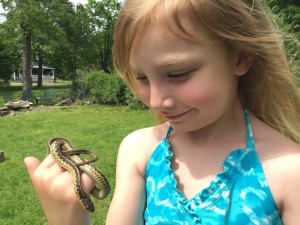A few weeks ago, I attended the first UConn STEM Conference. In attendance were UConn professors, Neag School of Education Professors, teachers, curriculum coaches, State Department of Education officials, researchers, and more. We were there to discuss the NGSS and its impact on science education with STEM as a focus.
Throughout the day we kept talking about how the NGSS had to shift the focus of science education away from isolated scientific experiences that didn’t connect to students’ lives or experiences to more work that focused on “personally relevant phenomena.” Now go read that last statement again. Personally Relevant Phenomena. When you think about it, the idea is quite simple. If you want to teach a child how to count change, give him or her some money and ask him or her to pay for something at the store. But in science, we often find ourselves creating experiments to showcase different scientific concepts in a way that does nothing to truly connect to a child’s life. This is where we need to shift in the future.
One example that was discussed was a high school unit on photosynthesis, trees, and forests. The old unit required students to research tress out in a forest on the Rocky Mountains. The students in question were kids in a downtown Denver high school. Most had never even been outside city limits let alone strolled through a wooded part of the Rockies. So instead, the unit shifted to focus on eliminating heat deserts in urban areas. Students would have to complete several investigations to help the city plan for mindful planting of trees throughout downtown. Think of the difference in impact this will make with students. Instead of researching an isolated topic in a location that students can’t relate to, they are studying a real problem in a place where they have first-hand experience.
So why do I share this information with you now? Because this afternoon, my daughter alerted me to a discovery: “Dadda, I found a snake!” she yelled as I got out of the truck. I looked over and sure enough, my daughter had a small garter snake in her hands. I went over and we had a wonderful discussion about how the snake’s tail was wrapping around her hand. Her most astute observation though was that the snake was “feels cool.” “Why do you think that is Char?” I asked. “Because he was in the shade.” she replied. It was a perfect moment for me to talk to her about how snakes feel warm or cold because they stay the same temperature as the place where you find them. Right then and there we had an impromptu conversation about snakes as cold-blooded animals. By finding a personally relevant phenomena (the animal I picked up in the shade feels cool) to her, I was able to help my daughter understand a pretty tricky concept.
As you get ready for those long summer afternoons where you think about giving your child’s teacher an extra hug come September, take those moments when you find personally relevant phenomena with your child and enjoy the learning that can take place. It will stick far better than you can imagine.
-Mr. Reed-Swale

